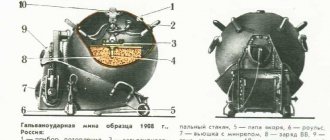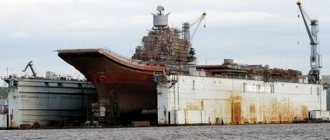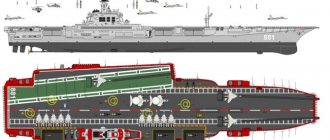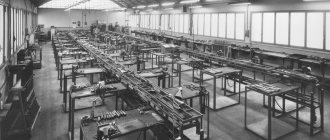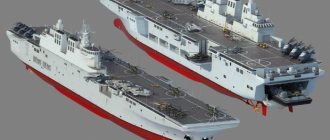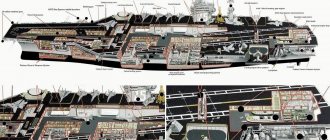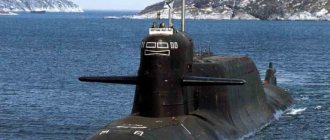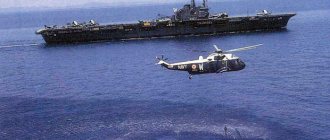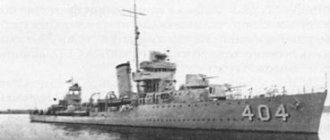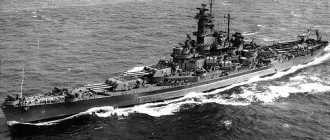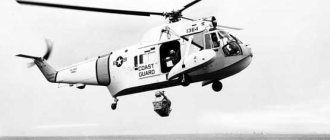San Antonio-class landing transport docks
In the 1990s, the American fleet was subjected to monstrous plunder and reduction: over 400 warships were scrapped. The process of global reduction of the Navy has affected even the holy of holies - amphibious forces. In less than a decade, the fleet lost 20 Newport-class tank landing ships (an analogue of the Soviet large landing craft with a bow ramp), 5 Anchorage-class universal landing ships, 10 Austin-class amphibious transport docks, as well as 5 Charleston-class amphibious force transports » to deliver materials and heavy equipment to the landing zone.
Observing the degradation of the first largest fleet, strategists from the Pentagon feverishly turned over possible solutions to the problem in their heads: is it possible to replace dozens of decommissioned ships with 10-12 highly efficient designs, thereby maintaining their former power at lower costs? The answer to the question was LSD(X) - a project of a promising transport and landing platform, created taking into account all the requirements of new times and the most modern achievements in the field of science and technology. The concept of the new ships turned out to be close to the Austin-type dock transports - unlike the European Mistrals and Juan Carlos, the main emphasis was placed on the capacity of the cargo decks and the number of personnel quarters. A spacious “ferry” for delivering expeditionary forces to a combat zone with subsequent unloading using its own means or landing equipment from other ships.
In addition to its main task - transoceanic transportation - the new transport dock was supposed to ensure the presence of the US Navy in troubled areas of the World Ocean, participate in counter-terrorism operations and humanitarian missions. Other mandatory requirements include unification with all existing and future Marine Corps landing craft: light and heavy helicopters, tiltrotors, floating tracked transporters, high-speed boats and air-cushion landing craft. The ship must be able to fend for itself in battle, but its cost must remain within $800 million.
USS San Antonio (LPD-17) and USS New York (LPD-21). New York's hull symbolically uses 6.4 tons of steel from the ruins of the World Trade Center.
As a result, on December 9, 2000, the USS San Antonio was laid down, the lead ship of the same type, which became a representative of the new generation Landing platform dock (LPD-17). The most noticeable feature of the San Antonio was the widespread introduction of stealth technology - despite the obviously impossible task of camouflaging a 200-meter ship against the background of the sea surface, the Yankees used a whole range of simple and ingenious solutions that made it possible to reduce the detection range of the dock transport several times enemy radars.
Simple and clean lines of settings, the upper part of the side is filled “inside”, a minimum of openings and radio-contrast details. Particular attention was paid to small details - a specially shaped anchor hawse, a stealth casing for a folding crane, widespread use of radio-absorbing materials...
Of particular interest are the unusual pyramidal masts of the Advanced Enclosed Mast/Sensor System (AEM/S) - 28-meter hexagonal structures made of composites, balsa and carbon fiber, inside which a complex of antenna devices is hidden. In addition to significantly reducing the radar signature of the ship, the use of AEM/S made it possible to reduce the number of mutual interferences during the operation of many radio-electronic devices, as well as to increase the service life of the equipment, protecting antenna devices from the influence of adverse weather conditions.
Inside the fantastic masts are hidden the AN/SPS-48E general detection radar, the AN/SPQ-9B two-coordinate horizon tracking radar, satellite communications equipment, as well as the TACAN helicopter drive and landing radio navigation system. Another AN/SPS-73 navigation radar is installed under the fairing in the nose.
All ship detection equipment is combined into a single information network AN/SPQ-14 Advanced Sensor Distribution System (ASDS). AN/USQ-119E (V) 27 - Global Command and Control System - Maritime (GCCS-M) is responsible for communications. For logistics during disembarkation/unloading of personnel, equipment and equipment - AN/KSQ-1 Amphibious Assault Direction System. It is a server that automatically maintains communication with landing craft and calculates their current position in space.
The AN/SPS-48E three-dimensional surveillance radar is another modification of the well-known phased array radar, created at the turn of the 60-70s. Similar systems are used on Nimitz-class aircraft carriers.
The Mk.1 Ship Self-Defense System (SSDS) complex of self-defense means, in addition to the above detection means, includes: - 2 Mk.31 RAM self-defense air defense systems - 21-charge launchers with melee missiles; — 2 automatic guns Mk.46 30 mm caliber with remote guidance; - Mk.36 SBROC passive jamming system; — electronic warfare system AN/SLQ-32(V)2.
In addition, on board there is a towed anti-torpedo rattle trap “Nixie” and another system for shooting dipole reflectors Mk.53 NULKA.
To participate in serious conflicts in the bow of the LPD, it is possible to install 16 Mk.41 UVP with ammunition for 64 ESSM anti-aircraft missiles, but at the moment none of the ships of this class carries such weapons.
In general, despite the abundance of beautiful names and abbreviations, the San Antonio self-defense complex is not capable of protecting the ship from modern attack weapons. All hope lies only in the destroyers that are part of his escort.
Transport and landing capabilities
As it already has a different purpose than the European UDCs - a solid flight deck and a helicopter hangar were sacrificed to the cargo decks and cockpits of the Marines. According to official statements, the interior of the LPD-17 provides unprecedented space and comfort for personnel. The ship was designed taking into account modern trends of the US Navy - special attention was paid to the accommodation of persons of both sexes: there are separate female and male quarters and restrooms on board. A great achievement of the designers is the increased inter-tier distance between the paratroopers' bunks and the presence of its own ventilation system for each berth. The bunks have folding tables/cup holders, and WiFi Internet is available in each cabin. There is a gym on board, as well as special rooms for relaxation and briefings...
Despite such an “egregious” level of comfort, which does not allow one to feel all the hardships and deprivations of military service, on board the San Antonio it was possible to provide space for 396 crew members and 700 marines (with the possibility of increasing the landing group through the use of additional premises). For comparison, the estimated capacity of the Mistral is 450 paratroopers.
Also on board the landing transport dock there are: - three cargo decks for trucks and armored vehicles with an area of 2229 square meters. meters; — two cargo holds with a volume of 963 cubic meters. m; — fuel tanks (kerosene JP-5) with a volume of 1190 cubic meters. m; - diesel tank 38 cubic meters of fuel meters.
The landing capabilities of the LPD-17, on the contrary, are poorly expressed. The aft dock capacity is two LCAC hovercraft. The aircraft hangar can accommodate only one heavy helicopter (CH-53E) or a V-22 Osprey tiltrotor. Or two medium CH-46 SeaKnight helicopters. Or three light Iroquois. The flight deck at the stern of the San Antonio allows for the preparation for departure of two tiltrotors or up to four light helicopters simultaneously.
There is an onboard crane for launching/recovering landing craft and RHIB semi-rigid boats from the water.
Finally, the price issue.
During the construction and retrofitting of the ship with additional systems, its cost doubled the estimated figure - to date, the average cost of a San Antonio-class LPD is $1.6 billion. The cost of the latest ships in the series has already exceeded 2 billion. Due to the inability Northrop Grumman limited the series of dock transports to 11 units to keep the cost of work within the agreed schedule. To date, the US Navy has 8 LPDs of this type, with three more transport docks being completed.
For comparison, the Russian Mistrals cost the treasury $800 million for each ship (the total cost of the contract for the construction of two UDCs is 1.2 billion euros). Such a great difference in the cost of European and American landing ships is explained by fundamental differences in their design and construction.
Compared to the Mistral, the American transport dock has a better chance of surviving in a combat zone. Unlike the “European”, which was designed according to the standards of civil shipbuilding, the “San Antonio” was created as a real warship, which is why it is able to withstand a powerful hydrodynamic shock, is more durable and survivable. Three knots higher speed. More advanced means of detection and self-defense. Stealth - all other things being equal, the enemy will detect the Mistral earlier.
But this is in theory. In practice, the American’s advantage is not so obvious - indeed, the San Antonio has a better chance of avoiding serious consequences if it explodes on a bottom mine, but an anti-ship missile hit can be equally fatal for both ships. Ultimately, the safety and security of any UDC or dock transport is determined by the capabilities of its escort. So was it worth investing an extra billion in a slightly more durable body and stealth technology? From the point of view of the US Navy with its immense budget, it was worth it. After all, they can afford it.
It is noteworthy that LPD San Antonio is the first large ship of the US Navy, whose design was carried out in the metric system (instead of the traditional US feet/pounds/inches)
Big money is not always a guarantee of success. For example, the lead USS San Antonio (LPD-17) became famous for its large number of technical faults.
A year after entering service, the ship went to Post Shakedown Availability (short repairs and modernization after the first months of service, correction of all identified deficiencies). The standard procedure for US Navy ships unexpectedly dragged on - in July 2007, the Northrop Grumman office received an irritated letter from the Pentagon, signed by Secretary of the Navy Donald Winter: “23 months have passed since the ship entered service, but the fleet has not received a combat-ready ship."
The repairs were completed by the end of the year, but the troubles did not end there.
In August 2008, the San Antonio was unable to go on a combat mission on time due to a breakdown of the aft wall drive of the docking chamber. Two months later, while in position in the Persian Gulf, LSD-17 again required urgent repairs in Bahrain (a problem with the fuel lines). In February 2009, while passing through the Suez Canal, one of the engines suddenly switched to reverse mode - as a result, the newest ship was almost smashed against the bottom and walls of the canal.
The process of the San Antonio entering service was accompanied by a two-year series of repairs at Norfolk shipyards, scandals with the dismissal of responsible persons and the termination of contracts with unscrupulous suppliers.
In principle, a typical situation for any of the fleets when testing new equipment. The US Navy is no exception here. Money is important, but even it cannot solve all problems.
Prospects
The very fact of the appearance of the San Antonio-type amphibious transport dock indicates a simple and obvious situation: despite all the colorful descriptions of the tactics of using amphibious groups, the US Navy does not plan to conduct amphibious landing operations. All stories about the “over-the-horizon landing” are nothing more than fairy tales for impressionable ordinary people. A landing from the sea will at best have a diversionary effect or turn into a “targeted” attack by a special forces group. Using the San Antonio in a large-scale war is pure suicide. But why do the Yankees continue to build such ships? The Pentagon is well aware of the purpose of the San Antonio - if we call a spade a spade, then the LPD-17 should be called a “comfortable motor ship.”
All major wars of our time are carried out according to a single scenario - the Yankees unload equipment, soldiers and equipment at the port of a nearby state for several months, and then, breaking through the land border, proudly enter the territory of the chosen victim. This is much simpler, safer and more useful than sailing on a flimsy boat, fearing a stray shell, and then crawling out knee-deep in water onto a shore covered with thorns under fire from enemy tanks and machine guns. Without the cover of our heavy armored vehicles. With multiple numerical superiority of the enemy. This is madness.
Americans act differently.
Tanks, necessary materials and fuel will be delivered to the nearest port by Maritime Transport Command transports. But what about the personnel in this case? American contract soldiers will run away upon learning that they will have to spend a month in the stuffy hold of the ship. For these cases, there is the “San Antonio” - a comfortable ship that will deliver a couple of Marine Corps battalions, with personal weapons, equipment and heavy equipment, to the other end of the Earth. Cheap, convenient, effective. And then will set off on the next voyage on the route Norfolk - Persian Gulf.
That is why there is only one helicopter on board and a clear disregard for landing craft. Why does the San Antonio drag dozens of helicopters if it plans to unload onto the pier using a ramp? And if necessary, helicopters will help, which will fly from the nearest coastal base.
But these are plans for the future... In the meantime, 2 billion ships are chasing feluccas of Somali pirates and ensuring the US naval presence in the most troubled corners of the world.
A couple of shots of the San Antonio interior
Based on materials from: https://www.fas.org https://www.navytimes.com https://www.wikipedia.org LPD 17 on the Shipbuilding Frontier: Integrated Product & Process Development. Association of Scientists and Engineers, 35th Annual Technical Symposium - 17 April 1998
Ship's coat of arms [edit]
The colors of the shield and star are taken from the Texas state flag. The Star is also the first ship to bear the name San Antonio. Red is the color of valor and sacrifice, blue is the color of loyalty, and white is the color of purity of purpose. The Alamo honors the people who were killed fighting for Texas's independence from Mexico. The Bluebonnets refers to the beauty and grandeur of Texas and extends olive branches to the ship's peacekeeping mission. The trident and cannon represent old and new weapons. Nineteenth-century cannonballs and cannons were similar weapons used by the brave men who defended the Alamo. the trident, a symbol of naval prowess, also represents the "triad of mobility" for which the USS San Antonio
. The Navy and Marine Corps Crossed Swords represent the collaboration and teamwork of the United States Navy and United States Marine Corps.
External links [edit]
| Wikimedia Commons has media related to USS San Antonio (LPD-17) . |
- Official website
- navsource.org: USS San Antonio
- Article in National Defense Magazine
- USN press release on commissioning
- Navy Times article on post-commissioning defects
| San Antonio class amphibious docks | |
| |
| |
| |
Links[edit]
- This article contains information from the Naval Vessel Register and other US Navy websites.
- ^ ab "Analysis of Pentagon Requests for Fiscal Year 2012". Costofwar.Com. February 15, 2011. Retrieved May 16, 2012.
- USS San Antonio - About Us. US Navy.
- "LPD-17 SAN ANTONIO-Class (formerly LX Class)". Federation of American Scientists.
- "Photos of the LPD-17 stealth crane being tested". Alliedsystems.com. September 20, 2001. Retrieved May 16, 2012.
- "San Antonio Class Landing Platform Dock". Naval equipment.
- ^ab Hansen, Louis, "After Shaky Start, Ship Gets Sea Legs", Norfolk Virginian-Pilot
, March 29, 2009. - “Will you go down with the ship?” . machinerylubrication.com, February 1, 2010
- Weiser, Benjamin; Schmitt, Eric (October 6, 2013). "US told to hold 'Qaeda' suspect on Navy ship". New York Times
. - "USS San Antonio leaves Red Sea after missile attack, enters Mediterranean". Stars and stripes. October 20, 2016
- "USS San Antonio Joins Operation in Libya". stars and stripes. October 21, 2016
- "Navy criticizes 'mismanagement'". Seattletimes.nwsource.com. July 2, 2007. Retrieved May 16, 2012.
- "American tragedy" . strategypage.com, August 4, 2010
- "The Navy's floating fiasco". time.com, November 12, 2008
- "San Antonio laid up in Bahrain". Navy Times
, November 9, 2008 - ^ B Reilly, Corinna "ShipShape? San Antonio Finally Almost Is There,” Norfolk Virginia-Pilot
, February 27, 2011. - Hansen, Louis. “The ship, after a shaky start, finds its feet.” Norfolk Virginian-Pilot
, March 29, 2009 - Wittmeyer, Alicia PQ, "Navy Commander Reprimands Sailor's Drowning", Norfolk Virginia-Pilot
, May 15, 2010. - Wiltrout, Keith, "Defects Accused Officer Pegs Defense in San Antonio," Norfolk Virginia-Pilot
, November 2, 2010. - Wiltrout, Keith, "San Antonio Crew Facing Obstacles, Former Leader" Testifies, Norfolk Virginia-Pilot
, November 3, 2010. - Wiltrout, Keith, "San Antonio Officer Cleared of Negligence in Drowning", Norfolk Virginia-Pilot
, November 6, 2010. - McMmichael, William H., "Memo mentions death in San Antonio", Military Times
, March 27, 2011. Retrieved March 28, 2011. - "CRS RL34476 Navy LPD-17 amphibious assault ship procurement: Background information, issues and Congressional options 07 July 2010". Opencrs.com. Retrieved May 16, 2012.
- Capaccio, Tony (28 October 2010) "Northrop Navy Ships 'Not Survivable' in Combat, Official Says". Bloomberg.com. Retrieved October 28, 2010
- ↑
Reilly, Corinne (April 15, 2011). "Reilly, Corinna, "Study Initiated in San Antonio Renovation." Hamptonroads.com. Retrieved May 16, 2012. - ↑
Reilly, Corinne, "Investigation Puts Troubled Ship at Gunpoint,"
Norfolk Virginian-Pilot
, April 15, 2011, p. 1. - Reilly, Corinne. “Navy suspends command oversight of ship repairs.” The Virginian-Pilot
, April 20, 2011 - ↑
McCabe, Robert, "Navy cancels Earl Industries contract over San Antonio work,"
Norfolk Virginian-Pilot
, May 7, 2011. - ↑
Reilly, Corinne, "Navy San Antonio Goes to Sea Test",
Norfolk Virginian-Pilot
, May 18, 2011. - Sizemore, Bill, "San Antonio Overhaul Found Fit for Work", Norfolk Virginian-Pilot
, May 27, 2011. - McMichael, William H., "Crew: San Antonio Amphib Finally Fixed", War Times
, June 15, 2011. - ↑
Reilly, Corinne (20 July 2011). “Beleaguered Navy San Antonio has another setback | HamptonRoads.com | PilotOnline.com". HamptonRoads.com. Retrieved May 17, 2012. - ↑
McMichael, William H., "San Antonio Ready for Survey, Navy Says,"
Military Times
, August 3, 2011. - ↑
Muñoz, Carlo (August 4, 2011). "Navy says new amphibious vehicle is finally the shape of a ship". defense.aol.com. - Wiltrout, Keith, "San Antonio Earns Navy's High Rank Battle 'E'," Norfolk Virginian-Pilot
, March 3, 2012.
